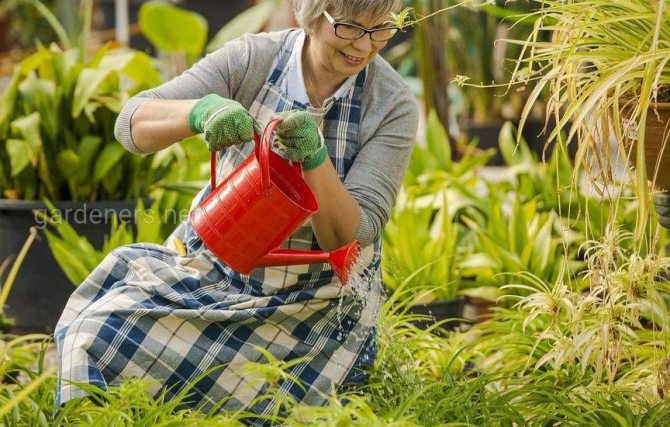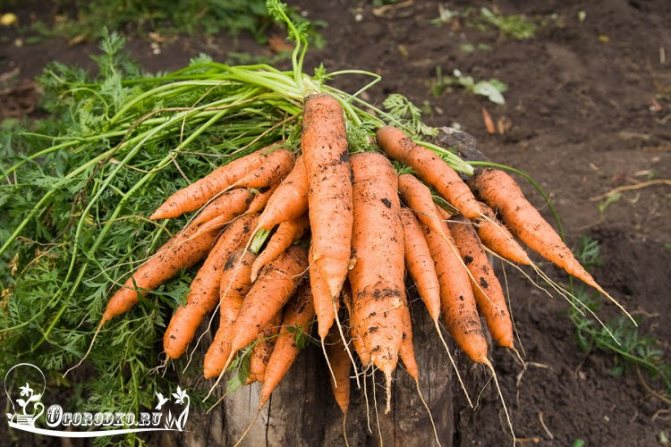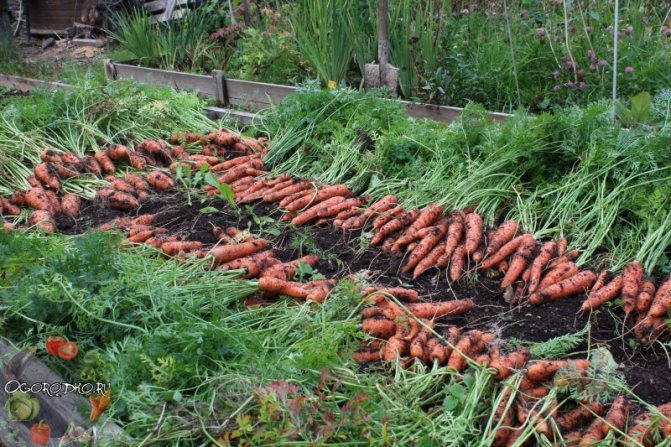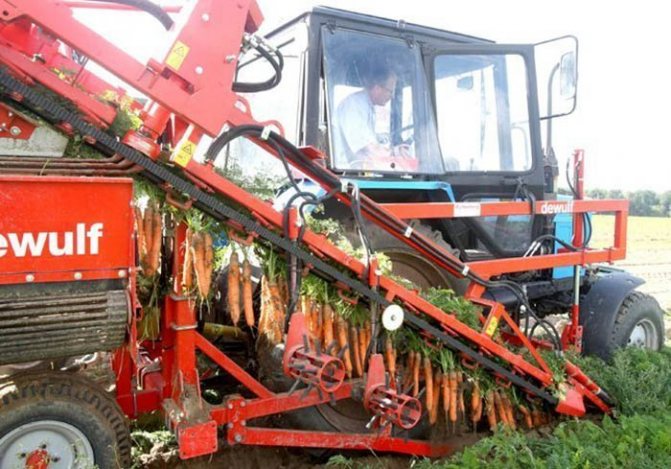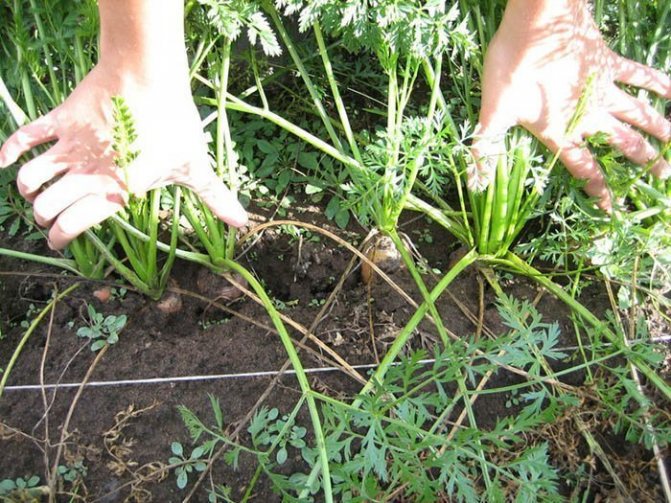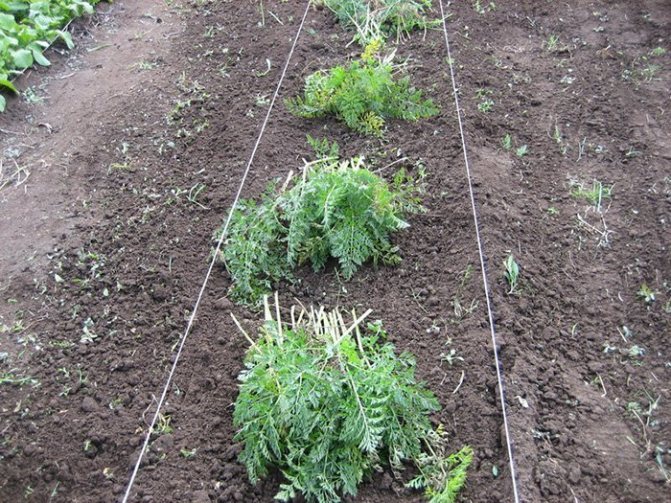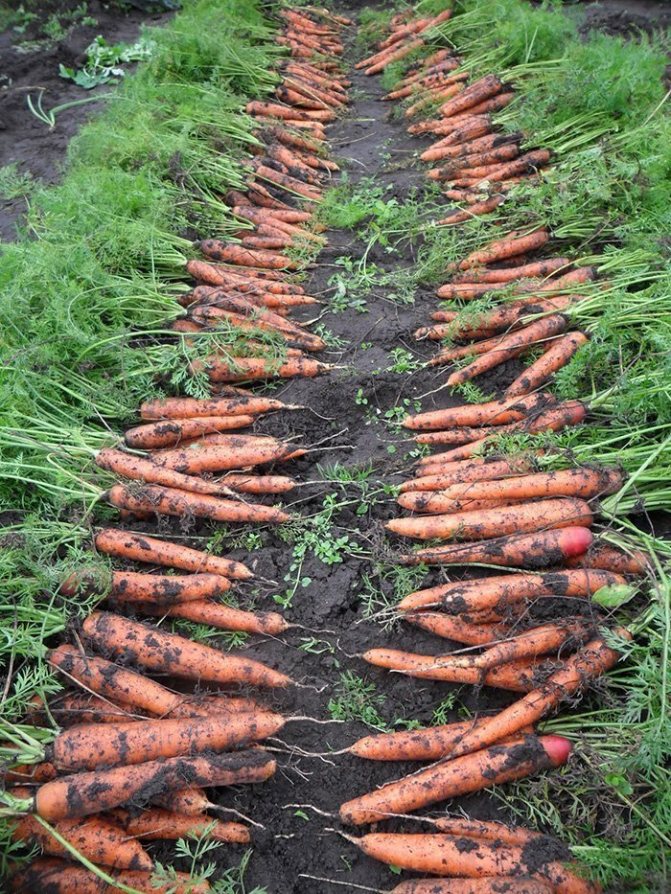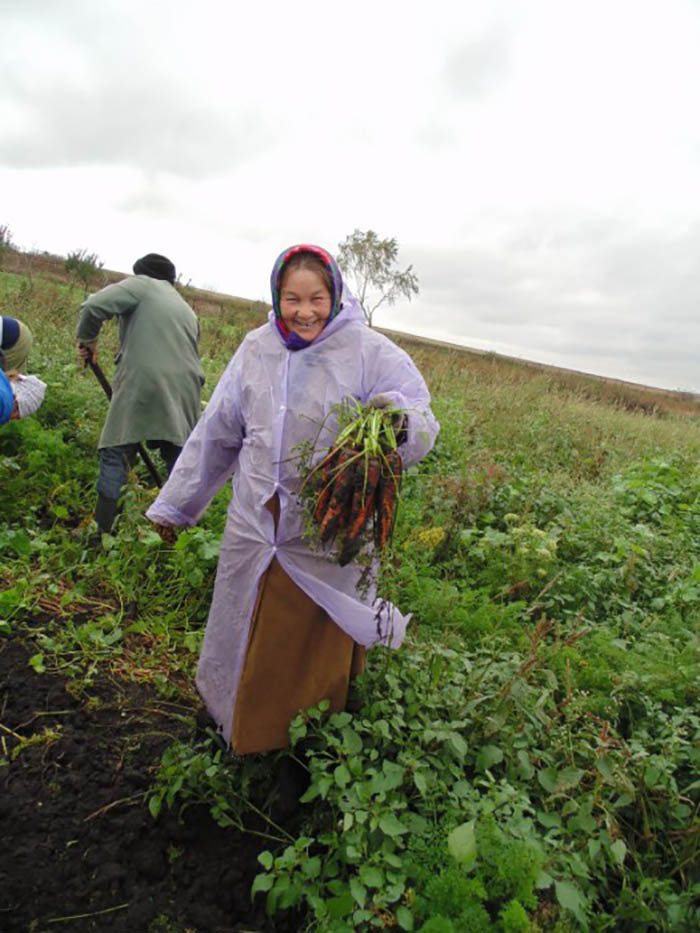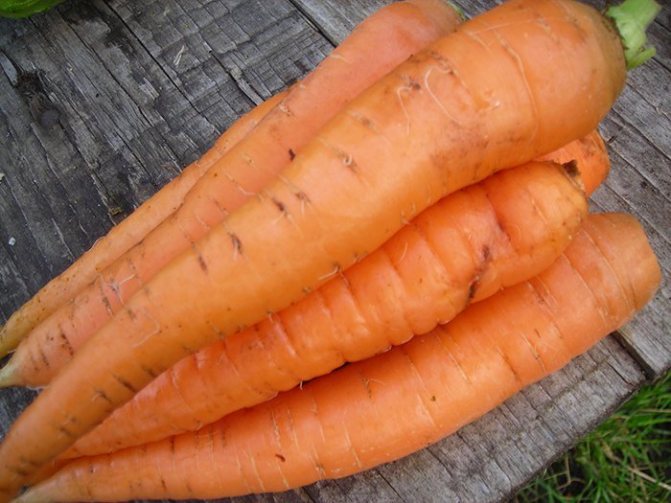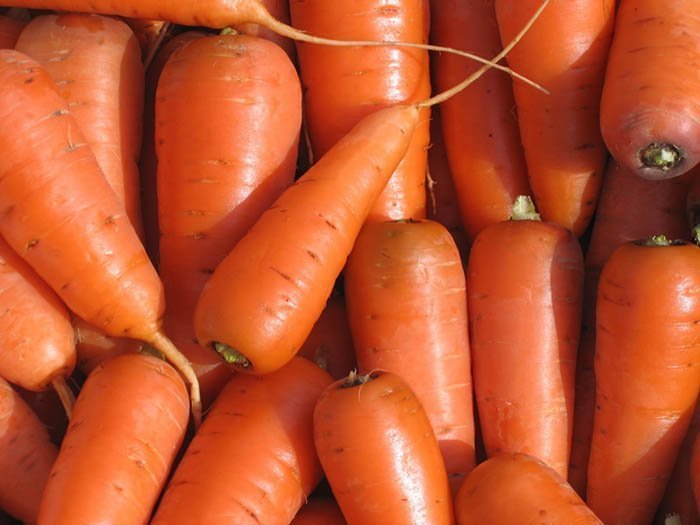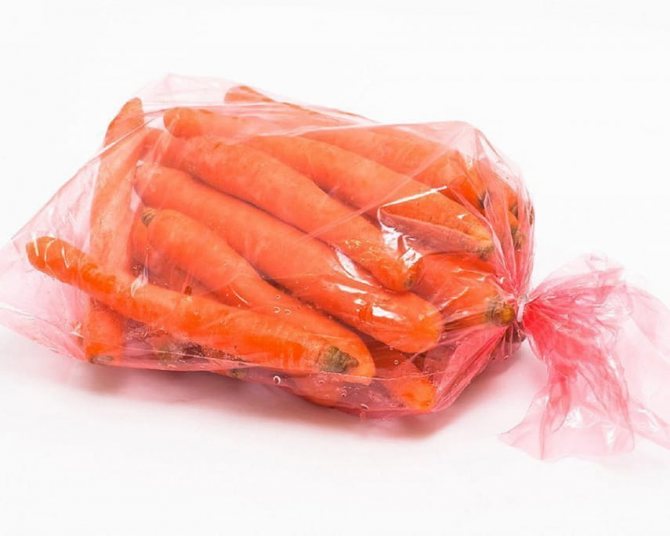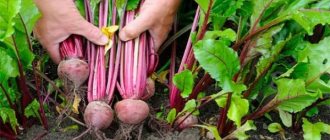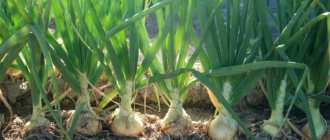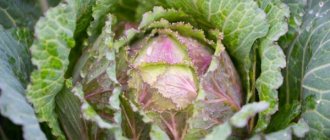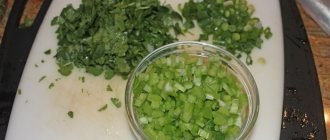- How to improve the keeping quality of root crops.
- Why do deformed carrots grow?
- When to dig up carrots.
- Harvesting carrots.
- Harvest preparation for storage.
- How to save dug carrots
Carrots are the most common vegetable found in Russian vegetable gardens. When growing, it is quite unpretentious, but in order to grow and preserve root crops, you need to know some of the nuances.
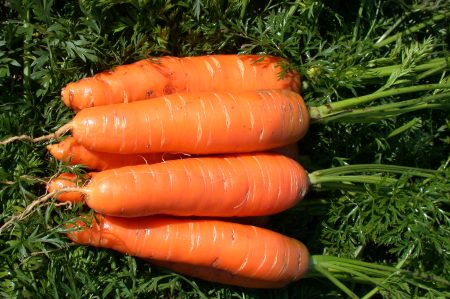
Agricultural practices that improve the quality and keeping quality of carrots
Carrots need a very loose soil without lumps and stones. Therefore, they make a deep digging of 20-25 cm and carefully break up all the lumps. In dense soil, carrots grow small. The culture grows well on loose, rich soil with a sufficient admixture of sand. The soil needs neutral or slightly acidic (pH 5-6.5). With high acidity, the soil is limed a year before planting carrots, or, in extreme cases, in the fall.
When planting and growing, you should not apply a large amount of fertilizer, the vegetable becomes woody and loses its taste. You can not even bring in half-rotted manure, from which the carrots begin to rot right in the ground.
Before sowing, it is advisable to hold the seeds for half an hour in running water or soak them for 2-4 hours. When soaked, essential oils are washed out of the seeds, which prevent germination. Reception allows you to get friendly and fast shoots. Carrots are sown at the earliest possible date at a temperature of at least 4 ° C. Possible podzimny sowing of a root crop. In the northern regions and the middle lane, late sowing of the crop (the first decade of June) is permissible, if at this time the temperature does not exceed 18-20 ° С.
After sowing, in hot weather, the garden bed is watered from a watering can with a splitter, but not very abundantly, otherwise the seeds will go deep. The crop needs sufficient watering during the first period of growth. Then she has enough precipitation. And only if the summer is dry, the beds with plants are watered once a week.
Weeds should not be allowed to overgrow the beds during the germination period and in the first half of the growing season until the tops cover the aisles.
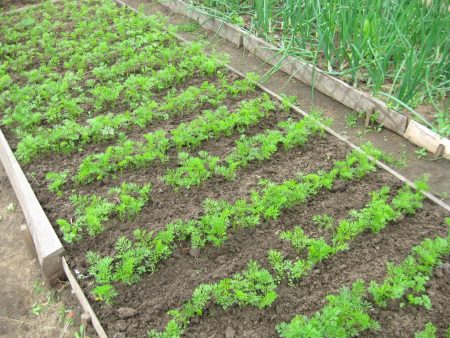

Weeds emerge before the crop and make it difficult to germinate. And it is very difficult to see the rows of crops in a solid green carpet. Therefore, the rows are covered with peat so that they are clearly visible, and the aisles are weeded without fear of damaging the seedlings. Without weeding during this period, the roots become smaller.
When the plants have 2 leaves, they are thinned out, leaving a distance of 10 cm between them.You can leave 5-7 cm, and then gradually pull apart, using young, pouring root vegetables for food.
Carrots are a potassium lover, so they are given one potassium supplement per season. Potash fertilizer should not contain chlorine, since the culture does not tolerate it.
Root deformation
Multi-tailed specimens are often seen. Carrots form a branched root crop in the following cases.


- When transplanting. The culture does not tolerate transplanting. Transplanted root crops always branch. Their growth point is at the end of the root, and during transplantation, the root bends or breaks off, the growth point is injured, and the root can no longer grow in length. Dormant buds awaken on it, each of which gives a new root.
- In the process of growth, the root bumps into a pebble or a lump of earth that it cannot overcome. Then the central axis stops growing and bifurcates.The soil for the culture should be loose to a depth of 30-40 cm.
- Excessive doses of nitrogen. Fertilizers should not be applied in any form, and even during planting, no nitrogen is applied. Neither compost nor humus is added under the carrots. In no case do not watered with herbal fertilizer. If there is too much nitrogen in the soil, then the vegetable not only branches, but also cracks, and quickly rots during storage. For the same reason, carrots cannot be planted after legumes.
- The addition of lime during planting also leads to root branching. You can not bring ash during planting.
In addition to branching, there are other deformations. If the main root passes through dense soil layers during growth, constrictions are formed on it.
With an excess of moisture in the soil in the last 35-45 days of growth, root crops crack. Therefore, 1-1.5 months before harvesting carrots, watering is stopped.


General information about the culture
Carrots are among the most famous root vegetables. It is a biennial plant. In the first year, forms a basal leaf rosette and a fleshy fruit. On the second, it forms a stem, blooms and gives seeds.
Carrots are not afraid of cold weather and can give their first shoots even at an air temperature of 5 degrees. However, the temperature regime quite strongly affects the further development of the vegetable. If it is 8-10 degrees outside, the seeds germinate in 25-30 days, while at 18-20 degrees - after 7-8 days. For the formation of fruits, the optimal temperature is 20-22 degrees, and for the growth of tops up to 25 degrees. Too high temperatures can reduce or completely stop the development of the root crop.
Carrots are very light and moisture-loving culture. For normal growth and development, it requires sufficient lighting, especially during germination. If carrots are planted in the shade, they will become less useful because they are less useful. its chemical composition will deteriorate, as well as yield and quality of fruits will decrease. Normal growth of carrots is possible with sufficient soil moisture. Particular attention should be paid to watering during the period from sowing to germination, in the first phases of development, as well as during the development of leaves and the growth of root crops.
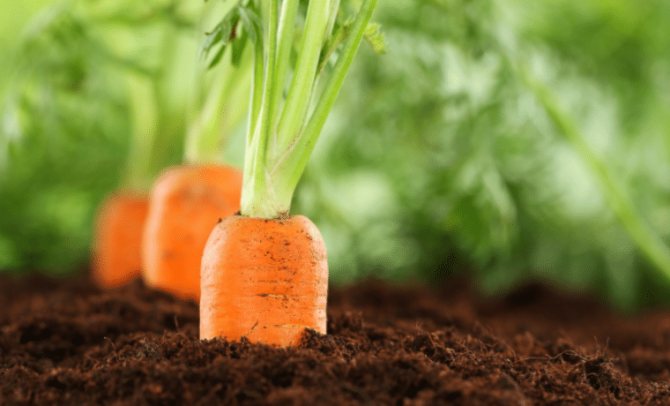

Carrots in the garden
Carrots like to grow in light, deep soils. It gives a large harvest in regions with a temperate and subtropical climate. It shows the best growth results in cool areas with temperatures from 16 to 18 degrees and insignificant differences in daily temperatures.
The beneficial properties of carrots have been known since antiquity. Root crops contain many vitamins, especially carotene, from which vitamin A is formed in the body. Thanks to the use of this vegetable, it is possible to improve the functioning of the digestive tract, kidneys, liver and cardiovascular system. Carrots sharpen vision, and if you include it in the child's diet at least a couple of times a week, it will have a positive effect on his growth and development.
Maturity criteria for carrots
In general, the harvest of carrots begins to be harvested long before the end of the growing season: thinning the crops, they pull out the least developed specimens and immediately eat them. But harvesting in the full sense of the word can be carried out only after the vegetables reach maturity, otherwise they will not be stored for a long time.
Overexposure is also dangerous: root crops crack, dry, lose their taste. In addition, carrots, being a 2-year-old plant, in warm weather and moderate humidity ("Indian summer") are able to start growing again, which also has a bad effect on consumer properties.
Signs of ripe carrots:
- 2–3 lower leaves on the tops have turned yellow. If the tops wilted and turned yellow too early, then this is not a sign of ripening, but a disease.
- The size of the root crop is within the limits typical for the given variety. To be sure of this, 2-3 specimens are dug up for testing.
- Filamentous roots have formed on the root crops.
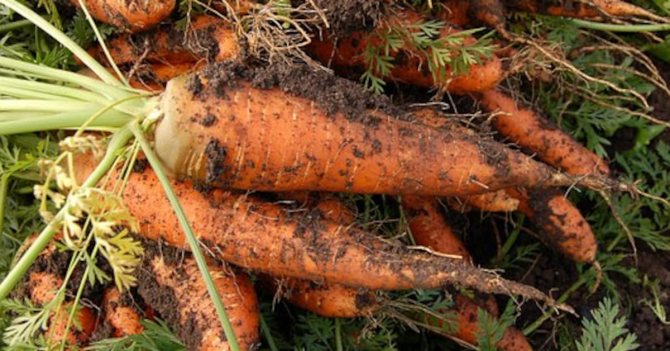

If filamentous roots appear on the root crop - it's time to start harvesting
Early harvesting is especially undesirable if carrots are to be consumed in winter. In this case, the most noticeable shortage of sugars, beta-carotene and other vitamins. But the plant accumulates most of all nutrients precisely at the end of ripening and at low temperatures.
The timing of full ripening depends on the type of variety:
- Early maturing: 2-3 months. after shoots. In the middle lane, such carrots are harvested in July-August; they are not intended for storage in winter. This also applies to carrots planted before winter. It sprouts in early spring, must be harvested around mid-July and is also intended for summer and autumn consumption.
- Mid-season: 3-4 months. Accordingly, in most of Russia, harvesting begins in August - September. Such roots are suitable for winter storage.
- Late: 4-5 months The most delicious and nutritious vegetable. "To the desired condition" comes to September - October (up to the 10th). Also suitable for storage in winter.
If the summer is cold, rainy, carrots ripen 10-15 days longer.
It is important to clean in proper weather conditions when:
- cool;
- dry;
- Mainly cloudy.
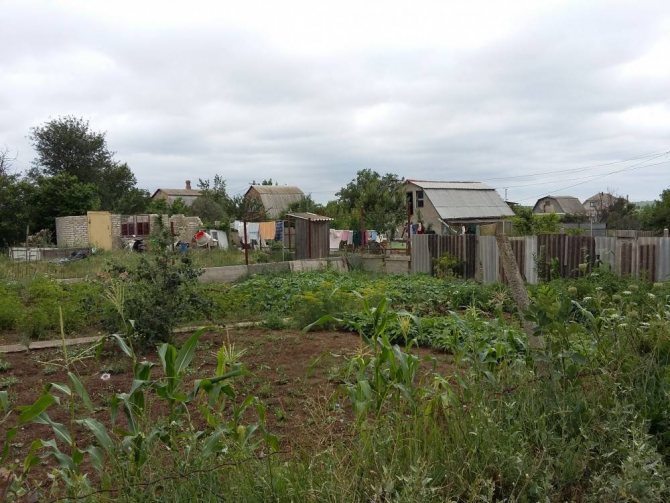

It is better to dig up carrots in cloudy cool weather.
Then the carrots will dry well and will not wither, as in the heat. A withered vegetable is not stored for long.
Do not rush to clean up if weather forecasters promise a cold snap. This culture is cold-resistant, and if the temperature remains above zero, albeit low, it continues to actively accumulate nutrients. If early frosts are expected, the tops are carefully bent down and the beds are covered with agrofibre. You should also wait out long rains, postponing cleaning until dry weather.
Factors affecting the timing of harvest
Several factors indicate that it is time to harvest the planted carrots. They need to be considered together, because individually, they cannot make it clear that the harvest time has come.
- Root variety. When harvesting, it is important to take into account the varietal peculiarity of the crop and focus on the period of its ripening. This information should be indicated on the seed packaging.
- Climatic features of the region. In warm areas, the crop can be harvested several times per season. In more severe conditions, carrot harvesting begins by the beginning of autumn and is performed only once.
- Unfavorable weather conditions. With the onset of early autumn, when the weather is cold and rainy, you can remove carrots from the garden for storage in September. If the beginning of autumn will please you with warmth, then you can postpone the harvest until the beginning of December.
- Features of crop care. If you take care of carrots according to all the rules, then it will ripen in accordance with the terms of a particular variety.
- Varietal sizes of root crops. Large varieties ripen very quickly, while small varieties ripen more slowly.
- Condition of the lower part of the haulm. When the leaves begin to wither and dry, you can start harvesting from the garden. But there is one nuance here: if the weather permits, then it is better for carrots to stay in the ground for a while for its better preservation.
There is another clear sign that carrots can already be harvested. This is the appearance of rodents in the garden. They love to feast on a vegetable and wait for it to ripen. They are not interested in immature fruits, but as soon as they reach the stage of full ripeness, the animals begin to actively attack the plantings, making stocks of carrots for the winter.
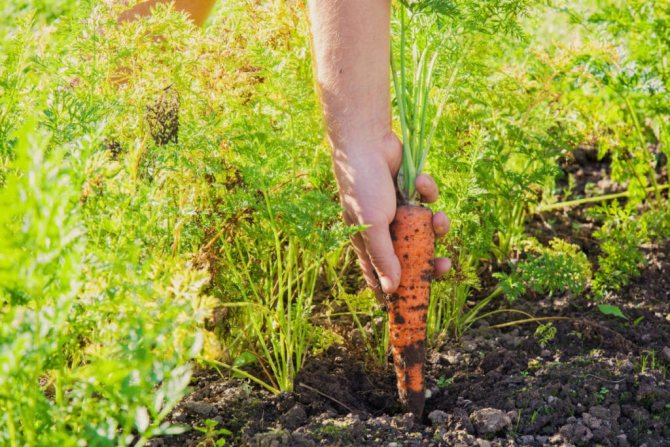

Harvesting carrots
When to dig carrots from the beds
The timing of harvesting carrots depends on the variety and sowing time of the crop.
- Early varieties of carrots can be dug out after 80-90 days (varieties Amsterdam, Parisian Karotel).
- Mid-season varieties are ready for harvesting in 100-120 days. These include the varieties Nantes, Shantane.
- Late varieties are dug out after 120-160 days (varieties Berlikum, Valeria (another name is Flakke)).
The main sign of the maturation of root crops is the appearance of white hairs on them - these are sucking roots. If the crop is not dug out at this time, the roots will grow, the root crop itself will become woody and germinate.


Any variety must stay in the ground for at least 80 days, then the vegetable will become of an acceptable size for harvesting and some kind of sugar will accumulate in it.
Late carrots, if they are not overgrown with hairs, can be dug after frost, since the cold is not terrible for the culture. In the ground, root crops can withstand temperatures up to -5 ° C, without freezing. After freezing, substances that give bitterness are destroyed in them and the carrots become sugary.
If there are no white hairs on the carrots, you cannot dig it out. The harvest is not yet ripe, sugar and amino acids have not accumulated in the root crops, metabolic processes are very intensive. When digging up carrots ahead of time, the root crops are not stored, they quickly rot or become dry, flabby and tasteless. Early harvesting is permissible only with immediate processing of the crop.
Cleaning rules
Having studied the moments on the temporary issues of harvesting carrots, you also need to understand how exactly it needs to be harvested. The further safety of the vegetable in winter will depend on the correctness of this process.
If harvesting is planned in the near future, they stop watering the carrots. The optimal period for this is 1-2 weeks before the expected date. Cleaning should be done on a warm, sunny day. This will allow drier roots to be harvested and stored better.
Many gardeners are guided by the lunar calendar. In this case, carrots are removed from the garden on the waning moon, which also contributes to its better preservation.
The methods of pulling root crops out of the ground depend on the size of the root crops. Short-fruited carrots can be pulled out with bare hands without the aid of any tool. This is done if the soil is not heavy, otherwise there is a risk of the tops breaking off, and the fruit will remain in the ground.
Medium and long roots are dug out with a shovel or pitchfork. They dig into the carrots with tools, and then, pulling the tops, pull them out of the planting place.
Using the help of garden tools, you need to be very careful so as not to damage the vegetable. Wounded fruits are not able to be kept fresh for a long time and will quickly deteriorate. The punctured carrots will need to be eaten immediately.
The dug carrots are immediately freed from the leaves. They are not cut off, but carefully cut with a sharp knife, grabbing the very top of the fruit, but not more than two millimeters. This will prevent the crop from germinating too early.
Peeled root vegetables must be dried during the day in some dark place before storage. Then the fruits are sorted out, too large and defective are rejected.
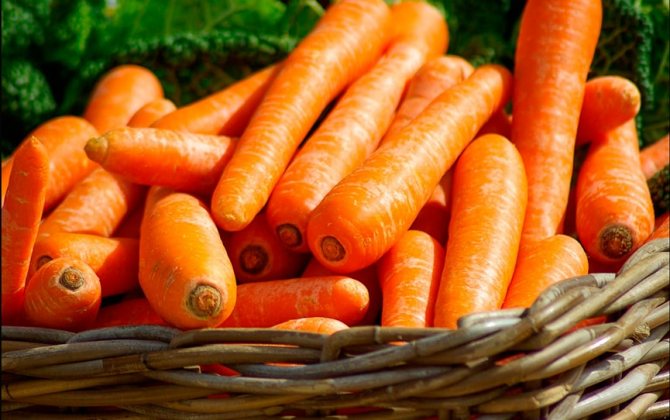

Before storing carrots, the tops are cut off.
Compost pit: manufacturing and operating rules
Summer residents are well aware that organic waste from plots should not be thrown away. They can be a healthy, environmentally friendly fertilizer. For their competent processing, the so-called compost is created. This fertilizer is produced in ...
16 December 2020, 12:10
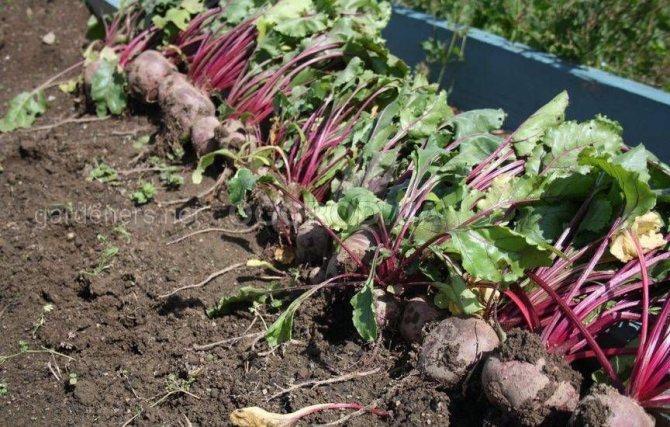

Nuances and storage methods
To keep carrots fresh until winter, it is necessary to create favorable conditions for them. Do not store frost-damaged crops, becausesuch root crops are not able to withstand numerous diseases and will quickly disappear.
In private houses or in the country, carrots are most often stored in a cellar or basement. The optimum storage temperature for root crops is 1-2 degrees Celsius. If the temperature is slightly higher, then I should be ready for the germination of carrots.
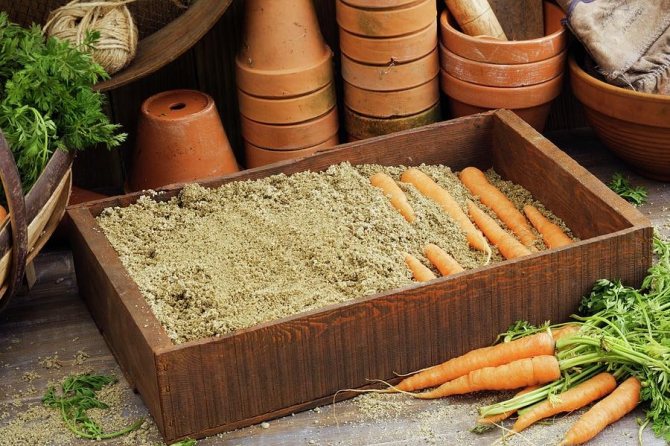

Carrots are placed in boxes and sprinkled with sand
The fruits are usually placed in wooden boxes, in which they are sprinkled with sawdust, sand, clay or pine needles. If there is a problem with the constant rotting of the crop, then liquid clay will be the best way to preserve it. It is diluted with water to a viscous homogeneous state. Each of the fruits must be completely immersed in the clay mass and dried well.
There is another rather unusual way to preserve carrots until spring. This requires large enamel pans. Well-dried fruits are placed in them, which are then covered with a napkin. The pans are closed with lids and lowered into the cellar.
Collecting and storing carrots is quite simple. If you do everything as expected, you can achieve good results and feast on a healthy vegetable throughout the winter.
Storage preparation
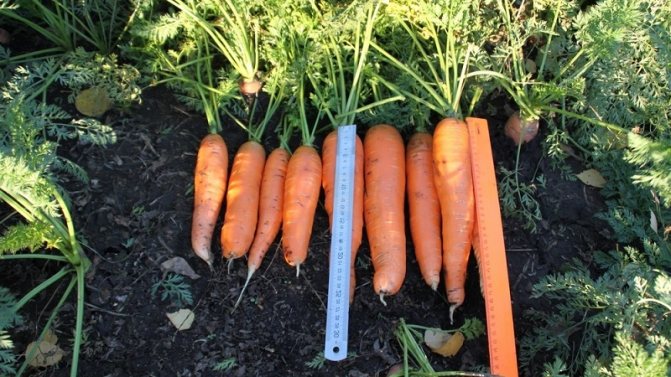

Removed from the garden, peeled carrots without tops are transferred to a ventilated place for drying. You cannot leave root crops in the sun, as they will quickly wither. After a few hours, the carrots are examined, sorted and laid out in boxes.
Advice. Do not send root vegetables showing signs of damage or disease to the cellar. A few spoiled specimens will ruin the entire crop in a short time. Fold them separately and use them for preparation or cooking.
Carrots, laid out in boxes, are kept for several days at a temperature of + 10 ... + 13 ° С to cool and heal minor injuries. The vegetables are then transferred to storage.
How to clean it correctly?
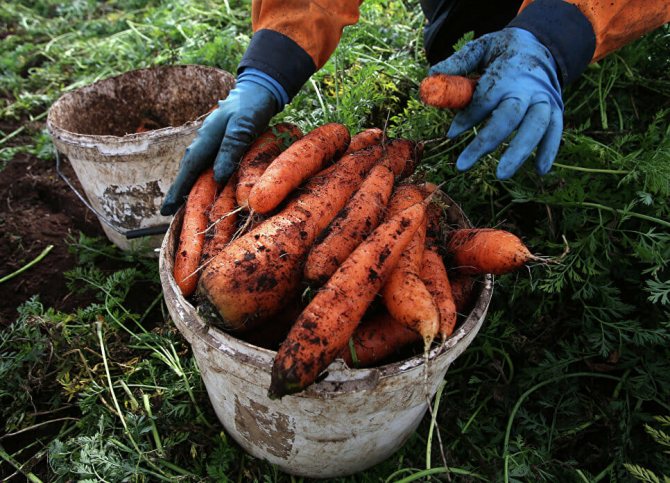

Medium and short root vegetables must be harvested by hand. Carrots in the ground are held with one hand, while the other hand must firmly grip the tops.
A long carrot is dug in with a pitchfork or a shovel. Basically, many people decide to dig with a shovel. After all, a pitchfork can accidentally injure or pierce carrots.
This must be done so that the roots do not get hurt or broken. The top layer of the earth rises with the carrot.
After that, you need to pull it out, gently holding the tops. There is a certain opinion that the plant should be left on the ground for several days.
Allegedly, nutrients from the aboveground part of the plants will pass into the underground part. Unfortunately, this opinion is wrong.
Everything happens completely the other way around - the root crop can dry out if the tops pull all the juices from it.
Therefore, the tops must be cut off as soon as the ground dries up on the root crops. How to do it?


There are several ways:
- twist by hand;
- cut with a knife to 2mm from the top of the carrot head.
Thus, the shelf life of the plant will be significantly increased.
Carrots are harvested exclusively in good weather.
Novice gardeners sometimes wonder if carrots need to be dried? The unequivocal answer is no. Before storing it, the carrot must be moistened.
You can also use the lunar calendar, which has already been liked by many experienced gardeners.
Its benefits are simply undeniable. After all, the care of plants does not take place anyhow, but in accordance with the rhythms that Nature determines.
When to dig up carrots for storage according to the lunar calendar? For example, the 3rd, 5th and 10th are considered auspicious days for cleaning.
Do I need to dry?
To prepare the harvested crop of carrots for long-term storage, it is necessary to carry out a number of activities:
- Clean root vegetables from dirt. Clods of earth are cleaned by hand.A knife or any other sharp metal objects injure the skin of the carrot, which significantly reduces the storage time of vegetables.
- Sort the harvested crop. At the same time, peeling the carrots from the ground, the roots are sorted. First of all, vegetables with damage, cracks, signs of spoilage are separated (such carrots are processed). For long-term storage, large, dense, undamaged fruits are laid. Small carrots are laid separately. It is eaten in the first place.
- Use a sharp, clean knife to cut off the tops, or separate the greens from the root crop by hand using the twisting method.
- Dry the carrots, leaving the vegetables in the garden for two hours.
- Before laying carrots for long-term storage, vegetables must be kept for five hours in a dark, well-ventilated place. During this time, the carrots are cooled, which allows them to take on a sufficiently low air temperature without stress.

